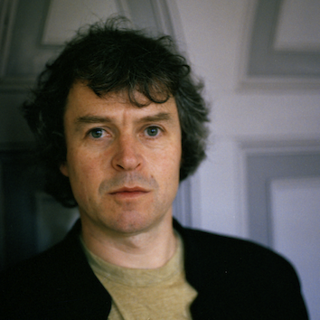
The viol, viola da gamba, or informally gamba, is any one of a family of bowed, fretted, and stringed instruments with hollow wooden bodies and pegboxes where the tension on the strings can be increased or decreased to adjust the pitch of each of the strings. Frets on the viol are usually made of gut, tied on the fingerboard around the instrument's neck, to enable the performer to stop the strings more cleanly. Frets improve consistency of intonation and lend the stopped notes a tone that better matches the open strings. Viols first appeared in Spain in the mid-to-late 15th century, and were most popular in the Renaissance and Baroque (1600–1750) periods. Early ancestors include the Arabic rebab and the medieval European vielle, but later, more direct possible ancestors include the Venetian viole and the 15th- and 16th-century Spanish vihuela, a six-course plucked instrument tuned like a lute that looked like but was quite distinct from the four-course guitar.
Alberich Mazak, also Alberik Mazák was a 17th-century Czech-Austrian composer.

The lirone is the bass member of the lira family of instruments that was popular in the late 16th and early 17th centuries. It is a bowed string instrument with between 9 and 16 gut strings and a fretted neck. When played, it is held between the legs in the manner of a cello or viol.
Hille Perl is a German virtuoso performer of the viola da gamba and lirone. She is considered to be one of the world's finest viola da gamba players, specializing in solo and ensemble music of the 17th and 18th centuries. She has a particular interest in French Baroque repertoire for seven-string bass viola da gamba. She also performs Spanish, Italian, German, and modern repertoire for the instrument and has released many CDs.

Michala Petri is a Danish recorder player. Her debut as a soloist was in 1969. She is the step-granddaughter of Danish actress Ingeborg Brams.
The Harp Consort is an international early music ensemble directed by Andrew Lawrence-King, specialising in Baroque opera, early dance-music, and historical World Music.

Vittorio Ghielmi is an Italian musician, conductor, compose Compared by critics to Jasha Heifetz ("Diapason") for his virtuosity, and described as "An Alchemist of sound" for the intensity and versatility of his musical interpretations, Vittorio Ghielmi attracted notice while still very young for his new approach to the viola da gamba and to the sound of early music repertoire. He is Professor for viola da gamba and Head of the Department für Alte Musik at the Mozarteum Universität Salzburg and visiting professor at the Royal College of London. He is graduate at the Università Cattolica di Milano.
Jonathan Manson is a Scottish cellist and viol player. Born in Edinburgh, he studied cello with Jane Cowan and later went on to the Eastman School of Music in Rochester, NY, where he studied with Steven Doane and Christel Thielmann. He studied viola da gamba with Wieland Kuijken in The Hague.
Kristin (Gräfin) von der Goltz is a German-Norwegian cellist. She plays music from the baroque repertoire, but she also performs music from later periods. Her five older brothers include the violinist and conductor Gottfried von der Goltz.
August Wenzinger (1905–1996) was a prominent cellist, viol player, conductor, teacher, and music scholar from Basel, Switzerland. He was a pioneer of historically informed performance, both as a master of the viola da gamba and as a conductor of Baroque orchestral music and operas.
John Tseng-Hsin Hsu was a viol player, barytonist, cellist, and conductor. He was a leading specialist in French baroque viol music and a professor of music at Cornell University.

Mahan Esfahani is an Iranian-American harpsichordist.

Richard John Campbell was an English classical musician, best known as a founder member of the early music ensemble Fretwork and for his newer association with the Feinstein Ensemble, specialising in historically accurate performance of 18th-century music.
Markku Luolajan-Mikkola is a Finnish baroque cellist and viol player. Born in Helsinki, he studied cello with Arto Noras at the Sibelius Academy, where he received his diploma in 1983. Later, an interest in baroque music led him to summer courses with Laurence Dreyfus, and afterwards he went on to Royal Conservatory of The Hague where he studied viola da gamba with Wieland Kuijken and baroque cello with Jaap ter Linden, receiving postgraduate diplomas in viola da gamba and baroque cello in 1992.

Myrna Herzog is a Brazilian born Israeli musician, player of the viol/viola da gamba and baroque cello, conductor, and researcher in the field of viols.

Imke David is a German viol player, author, Professor and Ensemble-Member.

Jonathan Dunford is an American violist specialising in the baroque repertoire.

Bettina Hoffmann is a German viola da gambist and cellist, musicologist, and music pedagogue. A specialist in Renaissance, and Medieval music, she is the leader of the Renaissance and Medieval ensemble of Modo Antiquo. She has an extensive discography, primarily on the Brilliant Classics and Tactus labels and participated in two Grammy-nominated recordings.

Siegfried Pank is a German cellist and viol player. He was a member of the Gewandhausorchester in Leipzig from 1962 to 1980, and toured with the Neues Bachisches Collegium Musicum. He turned to playing the viol in historically informed performance, and lectured cello and viol at the Musikhochschule Leipzig from 1984, as professor from 1988 to 2001. He was a co-founder of the International Telemann Association in 1991, serving as its president from 2012.

The La Folia Barockorchester is a Baroque orchestra dedicated to historically informed performance. It was founded in Dresden, Saxony, Germany, in 2007 by Robin Peter Müller, who has been its artistic director and concert master. Named after "La Folia", it is focused on music that was performed at the court of Dresden, which they have played at international festivals, and recorded.











